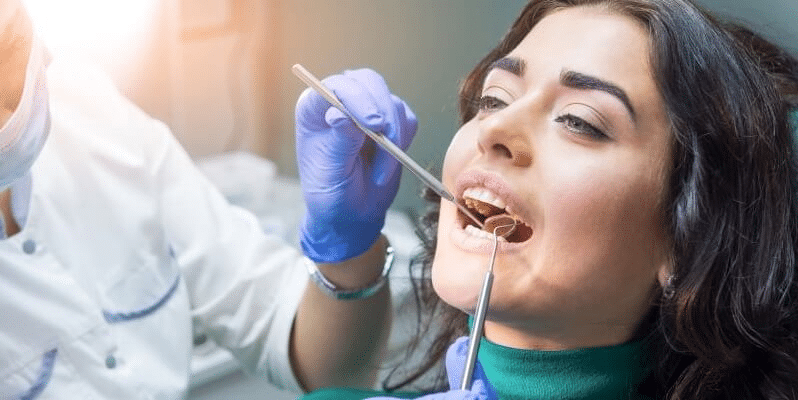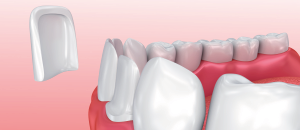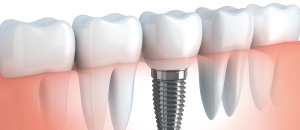Dental Treatments Abroad and at Home

When it comes to the question of where to undergo dental treatment, many factors play a role; factors that every patient weighs up differently. For some, quality is the decisive argument, whilst for others, price has a higher priority.
You will find a good balance of these two important factors if you look for dental treatment further afield. It is well known that many countries in Eastern Europe and Asia offer dental treatments for foreign patients that are of the same quality as those in their home country, but many times cheaper.
In the following article, we want to get to the bottom of the phenomenon of 'dental tourism' and take a closer look at the advantages and disadvantages of taking such a trip.
Available Dental Treatments
Interested in Dental Treatment? Find the Right Specialist at a Fraction of the Cost
Qunomedical only lists dental clinics and dentists that have been thoroughly vetted with quality and affordability in mind. Contact us for your 100% free, non-binding assessment.
What advantages do dental treatments abroad offer?
In recent years, a veritable medical tourism boom has developed from Western European countries towards the East; this is especially true for getting dental treatments. Here are some of the advantages of looking abroad to get dental treatment.
A very high quality of treatment
This trend is mainly based on the fact that the quality of the treatments is in no way inferior to those in visitors' home countries - sometimes even better. As is often the case in the UK and other countries, dentists abroad also hone their experience by specialising in certain treatments rather than offering a wide range.
Modern dental clinics abroad that specialise in medical tourism often have the very latest equipment available, as they have a constant stream of global patients requesting many different treatments.
Because of their financial dependence on foreign patients, many large clinics also follow a strict quality protocol, always striving to give each patient the best possible treatment and care so as not to risk bad reviews.
However, patient ratings are one of the quality features that can be manipulated, especially if the origin of the patient ratings cannot be identified. At Qunomedical, we collect our own quality control rating criteria which, together with real patient reviews verified via Google or Trustpilot, are included in the overall rating of a clinic.
Lower costs compared to home country
The cost of dental treatment is significantly cheaper abroad, especially the further east you go in Europe. The main reason for this is the lower cost of labour and living. This means that the amounts charged for dental treatment can also be significantly lower, with clinics still able to make good money.
Some countries also have lower regulatory and tax requirements towards the medical sector, which result in lower costs for licences and taxes compared to other countries, almost acting like a subsidy.
In addition, exchange rates can make prices in non-Euro countries cheaper for Europeans. In some countries, clinics offer all-inclusive packages for dental treatment that include not only the cost of treatment but also accommodation and transfer services between the airport, hotel and clinic. Due to the large number of bookings, the clinics get good deals from these service providers, which benefit the patients with a lower overall cost.
However, prices that are too low compared to prices from other clinics in the area should be evaluated carefully, and some more research around the offer may be beneficial.
Excellent patient service
The dental clinics that Qunomedical works with always welcome international patients. From experience, they know exactly what the biggest hurdles are and accordingly try to assist with problems of language, travel or customs.
Moreover, due to the high degree of specialisation in certain treatments, the procedures as well as the technology and methods used are often optimised in such a way that there is little waiting time for the patient, and treatments are carried out smoothly. This also affects the duration of treatment, because in a specialised and well-rehearsed team, everything goes faster.
The large number of treatments carried out also means that special requests are not uncommon and can be well catered for.
Faster and more flexible appointments
Dental clinics that attract private patients from the UK or other western countries can usually afford more staff, which also means that there are no long waiting times. The well-paid staff are also more willing to offer appointments later in the evening or even on weekends. The lower wage costs and reasonable surcharges for work outside normal hours make it possible, especially for dental clinics in countries such as Turkey, Croatia or Hungary, to grant patients a very flexible choice of desired appointments.
But of course it always depends on how many enquiries a particular dental clinic is currently receiving and what kind of treatment is involved.
If you are not set on a specific dentist or dental clinic, Qunomedical's patient managers can usually arrange an appointment within the next few days for your desired treatment.
Why book with Qunomedical?
At Qunomedical, we have years of experience helping patients to book dental appointments for their desired treatment quickly and easily. As many dental treatments in the UK and Western Europe have to be paid out of the pocket and quickly become very expensive, we particularly partner with excellent clinics in countries where dentistry is cheaper.
Some clinics in Turkey, Croatia or Hungary are considered the best clinics in the world for dental implants or veneers. Through strict quality control, we ensure that our partner clinics consistently provide first-class quality and service.
These clinics are always dealing with international patients and have adapted all their processes and services accordingly, so that the patients we refer always have a very good all-round experience.
For you, our referral service is completely free of charge, because our commission comes from the clinic you choose, without adding anything to your costs.
Interested in Dental Treatment? Find the Right Specialist at a Fraction of the Cost
Qunomedical only lists dental clinics and dentists that have been thoroughly vetted with quality and affordability in mind. Contact us for your 100% free, non-binding assessment.
Does Qunomedical also help with domestic bookings?
Yes, Qunomedical also works with partner clinics in the UK. We can help you to find an appointment in your preferred time period for the treatment you need. Just get in touch with our friendly patient managers.
Which treatments can be booked through Qunomedical?
Although our partner clinics specialise in the major procedures, literally all other dental treatments are also offered. Going on a medical trip, however, is usually only worthwhile financially if a more expensive treatment is the reason, as this is the way to save a lot of money compared to the costs at home.
The most popular treatments booked through us include:
You will find all treatments in the following overview.
How does a dental treatment trip abroad work?
Depending on the dental treatment, all steps can either be carried out within one trip abroad or maximum two. The processes are no different from having your teeth done in the UK.
If a period of healing between the first and second treatment trip is necessary, such as with dental implants, you will need to make the second trip to have your final teeth fitted after a few months. Despite the additional costs for flights and accommodation, going abroad twice can still be more financially beneficial.
For treatments that can be done within a few days, dental clinics abroad will try to time the appointments to be as short as possible for you so that you don't have to be on-site for an unnecessarily long time.
Unless you want to combine the trip with a holiday, because after all, cities like Istanbul or Izmir and their surroundings are very nice destinations to visit.
How soon can I get an appointment for dental treatment?
How long do I have to be on site?
Which doctor will take care about the aftercare?
How do I pay for the treatment?
What services are included in the price?
What kind of consultation with the doctor takes place beforehand?
In which language can I communicate with the doctors and clinic staff?
100% free and non-binding
We'd like to get to know you! Help us out by answering a few quick questions.
Our team is here to help you find the right treatment and doctor. Get in touch today for your 100% free quote.


